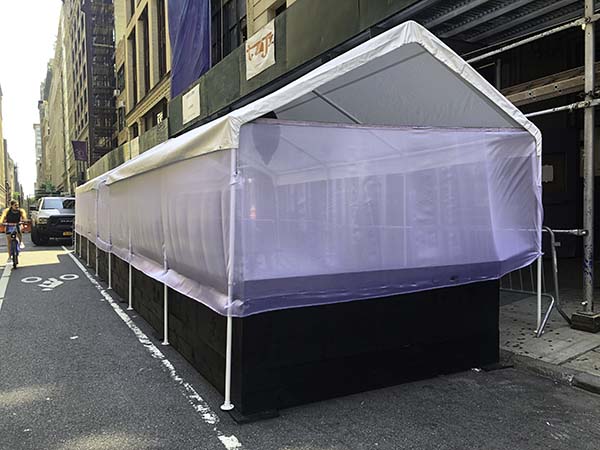What Agents Look For in A New Artist
At our company, Porterfield’s Fine Art Licensing, we receive anywhere from 500 to 1,000 inquiries each and every year from artists who are looking for expert licensing representation for their artwork.
Make your work suitable and compelling for retail products
The vast majority of art submissions are, in our opinion, unsuitable for retail products and thus unsuitable for licensing. As a result, we only take on two or three new artists each year.
Undoubtedly we miss out on some excellent artists whose work might license well, and we do turn down truly talented artists whose work wouldn’t be a fit for our company, our clients and our market.
We’re very picky, but so is every successful art licensing agency.
Survey the market on a regular basis
Our needs are probably much like the art needs of most art licensing agencies, so here’s a brief guide to what we’re looking for, and what we won’t consider.
Overall, keep in mind that if you survey stores of all sizes to see what type of artwork is on the retail products they have out for sale, you’ll gain a good idea of what’s current in terms of color, subject matter, style, format and composition.
That’s your jumping off point for what you – and manufacturers – guess will be needed for future products.
Is your art compelling enough to drive a sale at retail?
Regular market surveys are extremely useful and while occasionally you’ll come across artwork that is unusual and perhaps a bit odd, most of the time you’ll see very competent mainstream art that has great appeal, draws in the viewer and makes her want to purchase the product and bring it home.
What you won’t see is a lot of black and white art as most people like the richness of beautiful color.
As a result, we don’t take drawings or rough uncolored sketches because we’ve never been able to license them into retail.
Color, color and more color!
Our clients tend to want well-saturated, eye-catching color that grabs the eye instantly and will have the same effect on retailers and end buyers.
In the rare instance that an artist sends us extremely competent black and white drawings or etchings, we’ll ask the artist whether they also work in color. Generally they don’t.
It’s not a personal issue with me – I have a grouping of lovely framed line drawings of scenes in and around Boston on the walls of my home – but it’s just not applicable to our direction as a company.
So if you’re an artist, play it safe and color your work in the most appealing manner possible.
This is commercial art licensing, and art needs to sell product
Don’t send work to an agent that doesn’t have obvious commercial applications.
That would include abstracts, expressionist art or surrealist art, no matter how good, and any other images that you just couldn’t picture on a wide variety of products sold either in individual retail stores or in the wide range of mass-market nationwide or regional chains.
Occasionally images like these will license, but most often they won’t and thus aren’t worth the agent’s financial investment.
Here’s what we tend to want at our agency
Our agency tends toward representational work although we’re always seeking lovely, colorful and engaging design work suitable for quilting and home fabrics, gift wrap and gift bags, and related paper products.
Don’t send us CD’s or DVD’s, printed sheets or slides through the mail. The world has moved on.
Send only digital files in jpeg or PDF format or else direct us to your work on the internet so we can view it quickly.
Do your homework!
Research our agency on the internet before you send anything at all.
Find out what we do, who we are, and if you think your work might be a fit, email us.
The same is true for any art licensing agencies or producer of retail products.
Research a company, find out what their focus is, before going to the trouble to send anything to them.
Personalize everything, and avoid form letters!
Don’t send us a form letter. That tells us that you’re contacting every one of our major competitors.
Form emails go right in the trash.
If you want a response, personalize your email.
That same advice applies even more so when you’re contacting potential licensees directly.
Research them first, know what they do, locate the right person to contact and then go ahead and direct a personalized communication to that key individual.
Successful art licensing means creating successful personal relationships
Art licensing isn’t just about being able to create compelling artwork; it’s about creating relationships with the right people at the right companies.
You’ll want those relationships to be satisfying, friendly, productive and remunerative, and you’ll want them to go on for years and years.
I have over 2,000 licensing contacts here and abroad, and that figure includes people I’ve known for a decade or more and who have become good licensees, and good friends as well.
I look at each new licensing contact as a potential licensee and a potential friend who is a pleasure to email or call, who returns email and phone calls, who comes to me for new work and whom I always have in mind when art that might work well for them comes in from one of my artists.
Thus being successful in this industry isn’t just about creating compelling artwork.
It’s about building successful relationships that will become steady and reliable sources of income for many years into the future.
It can be a long process, so better start right now!
One last note – don’t sell yourself short. If your work doesn’t license, study the market, and work on producing artwork that’s just right and will meet with success.
Becoming successful in art licensing can take years, so best to begin right now.
– – – – –
The author, Lance J. Klass, is the President of Porterfield’s Fine Art Licensing at www.porterfieldsfineart.com and an expert in the field of art licensing.
This article is (c) Lance J. Klass. All Rights Reserved. This article may not be reproduced with the expressed written permission of the author.
For information about copying all or part of this article, contact the author at art@porterfieldsfineart.com.
Be sure to check out our main site at www.porterfieldsfineart.com.
Follow and “Like” us on Facebook and join with us on Twitter for timely tweets on the subject of art and art licensing.
You may also wish to check out our Art and Licensing News site at www.artlicensing.org for daily updates of the latest in news and articles about art and art licensing.
Tags: art licensing agents, how to license your art, licensing art
















Thank you for very informative information.
After all these years of creating different images in my work, I am wondering if I am ready for licensing market.
The only way to find out is to propose your artwork either to art licensing agencies or to companies that require compelling art to help sell their products. Stick your toe in the tub and see if the water is just right for you!